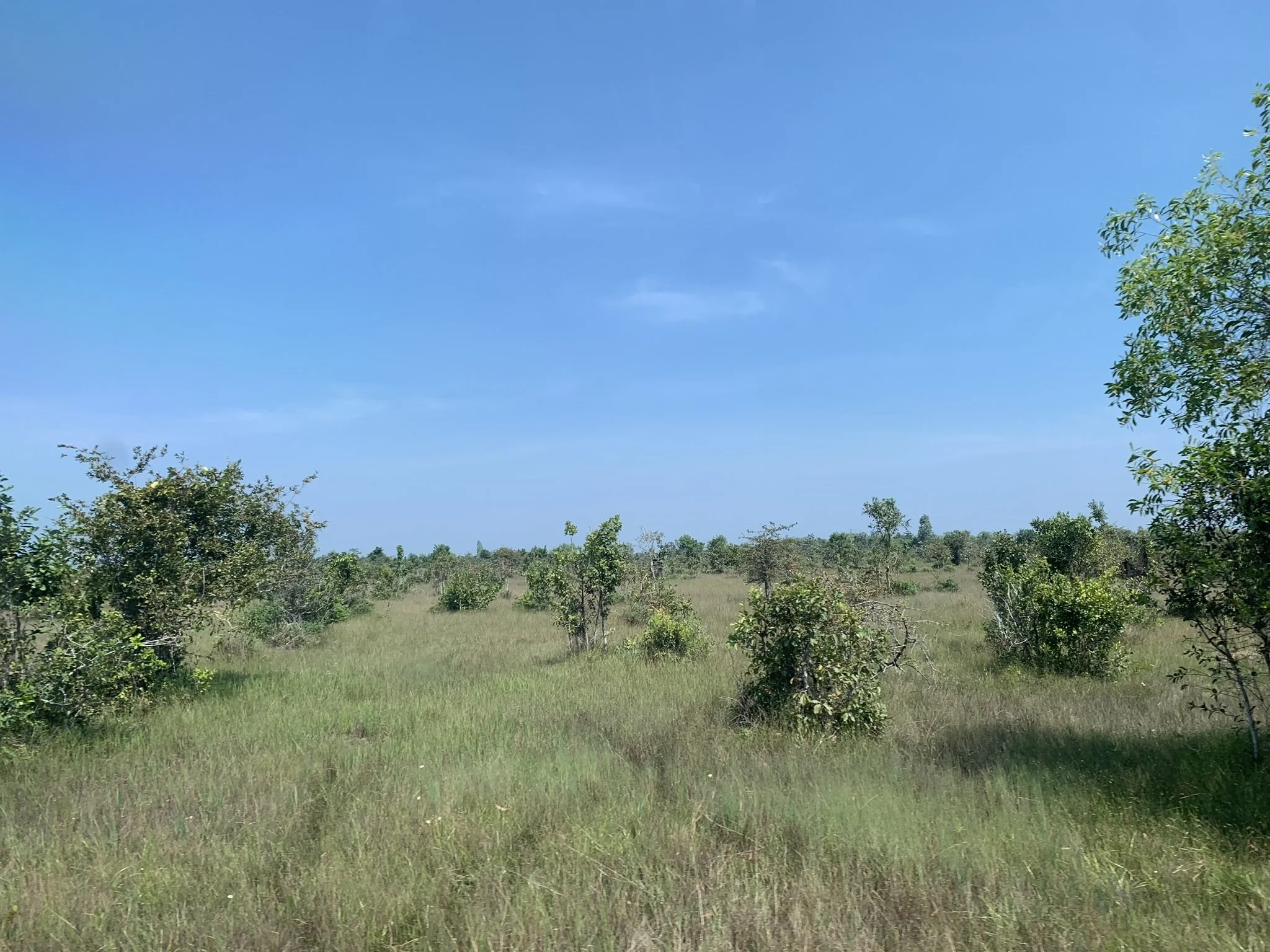
ACRE Cambodia
Cambodia ranks among the world’s highest rates of deforestation and land degradation
Deforestation and forest degradation in Cambodia experienced its most intensive stages in the last two decades, losing 1.44 million hectares of primary forest, comprising up to 34% of its cumulative loss, driven by economic land concessions, advancing agricultural frontiers, and illegal logging activities.
The loss of forest cover in Cambodia has exacerbated soil erosion and poorer soil quality, counting 44.5 million hectares in highly erodible soils, an area larger than Estonia. This places communities at risk of reduced agricultural productivity and increased vulnerability to flooding, impacting rural livelihoods.
Compounding these challenges is the lack of resources and capacity for effective restoration efforts, particularly in remote communities that depend on these ecosystems.
Pictured: tree cover (green) and tree cover loss (red), 2002-2024, Global Forest Watch.
GEOGRAPHICAL CONTEXT
Kampong Thom
ABOUT THE PILOT
ACRE Cambodia Phase 1 is a proof of concept for the transferability of the ACRE model, already operating in Myanmar, to a Cambodian context. We have an ambition of reforesting 50,000 hectares of degraded land in Cambodia.
Phase 1 of many
Our pilot is spread out among the community forests of Ou Pong Roung, Preah Sophea and Trapeang Lapeak in Kampong Thom Province. These community forests have been approved by the Cambodian Ministry of Agriculture, Forestry and Fisheries and operating since the late 2000s, and have shown great enthusiasm and high degrees of community organisation and capacity.
Demographics and society
The Community Forest Advantage
-
Community forests in Cambodia operate under a legal framework established by the Forest Law (2002) and the Sub-decree on Community Forest Management (2003). This ensures state approval for project activities and provides a secure legal basis for long-term forest management and land use.
-
Collaborating with community forests provides a clear mandate from local communities on land use and reforestation activities. This ensures project alignment with community priorities and fosters a sense of stewardship and responsibility for forest management.
-
Community forest management structures mandate inclusive and equitable governance, ensuring that all community members, including women and marginalised groups, have a voice in decision-making processes and benefit from project outcomes.
Engaging community forests in reforestation projects offers numerous advantages, including secure land tenure, community-led planning and governance, and equitable benefit sharing, contributing to community empowerment through reforestation and sustainable forest management.
OUR RATIONALE
ACRE Cambodia at a glance
PROJECT OVERVIEW
HECTARES
PHASE 1
451
50,000
HECTARES
PHASE 3 AMBITION
900K+
TREES TO BE PLANTED
PHASE 1
830+
COMMUNITY JOBS TO BE CREATED
PHASE 1
$2.7M+
AMOUNT TO BE DISTRIBUTED IN COMMUNITIES
PHASE 1
50K+
CARBON TO BE SEQUESTERED, TCO2E
PHASE 1 — EX-ANTE



